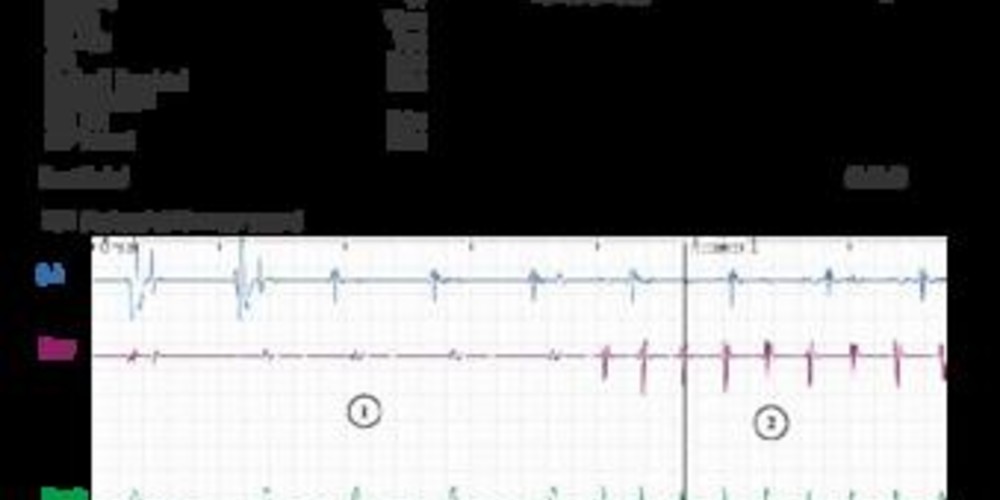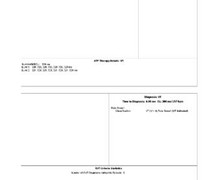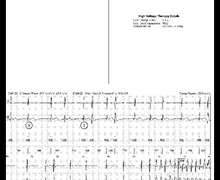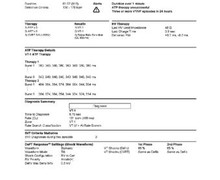Cardiac decompensation after electrical storm
Tracing
Manufacturer Boston Scientific
Device CRT
Field Management of atrial arrhythmias
N° 3
Patient
A 68-year old male patient with a history of ischemic cardiomyopathy and left bundle branch block for which he was implanted with a triple-chamber Boston Scientific Incepta CRT-D was hospitalized for cardiac decompensation. Interrogation of the device revealed multiple episodes of VT.

Graph and trace
- atrial sensing and biventricular stimulation.
- ventricular tachycardia (V>A).
- followed by 8 consecutive cycles in VT zone (episode detection).
- the VT continues but the ventricular intervals are under the VT detection threshold. With the current interval, the criterion of at least 6 out of 10 intervals in the VT zone is not met which ends the duration, the VT continues at a rate under the arrhythmia detection threshold.
- spontaneous cessation of the VT.
- recurrence of the same VT.
- again spontaneous cessation of the VT.
- new relapse with acceleration of the ventricular rhythm.
- at the end of the duration, VT is diagnosed (V>A) and anti-tachycardia pacing is delivered.
- successful burst and termination of the arrhythmia.
- new episode of VT.
- burst.
- successful burst.
Other articles that may be of interest to you







This patient was hospitalized due to severe cardiac decompensation in the context of palpitations and electrical storm. The surface electrocardiogram revealed multiple episodes of VT, some terminated spontaneously with fluctuating durations while others were terminated by ATP. Various mechanisms may explain why these episodes of VT exacerbated cardiac decompensation: loss of biventricular stimulation, tachycardia, atrio-ventricular dissociation, … There was no obvious trigger (ischemia, hypokaliemia) to explain this episode of electrical storm. Modifying the lower limit of the VT permits the device to more readily treat these types of episode by anti-tachycardia pacing.